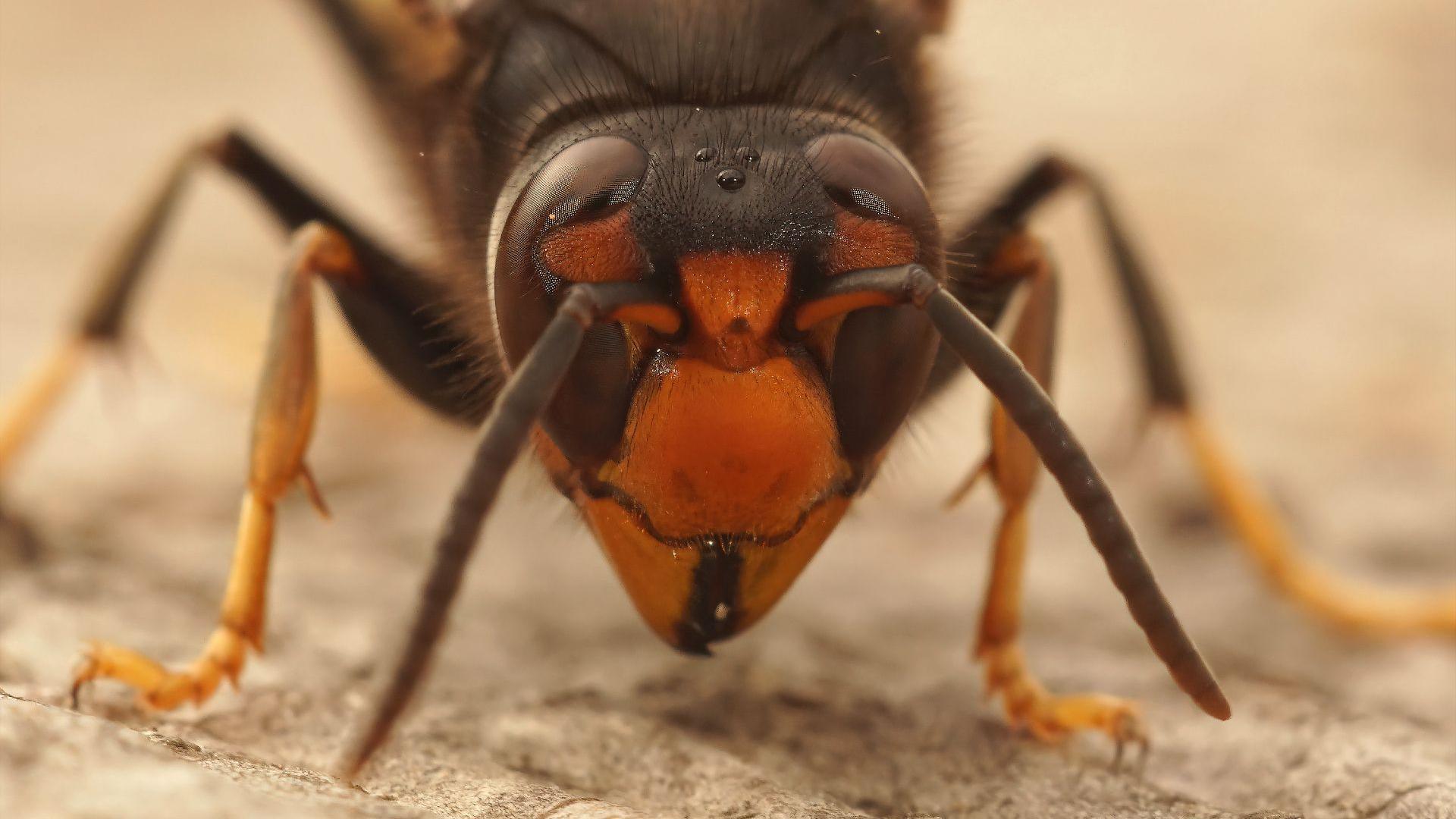'Unique sound' of Asian hornets' nests discovered
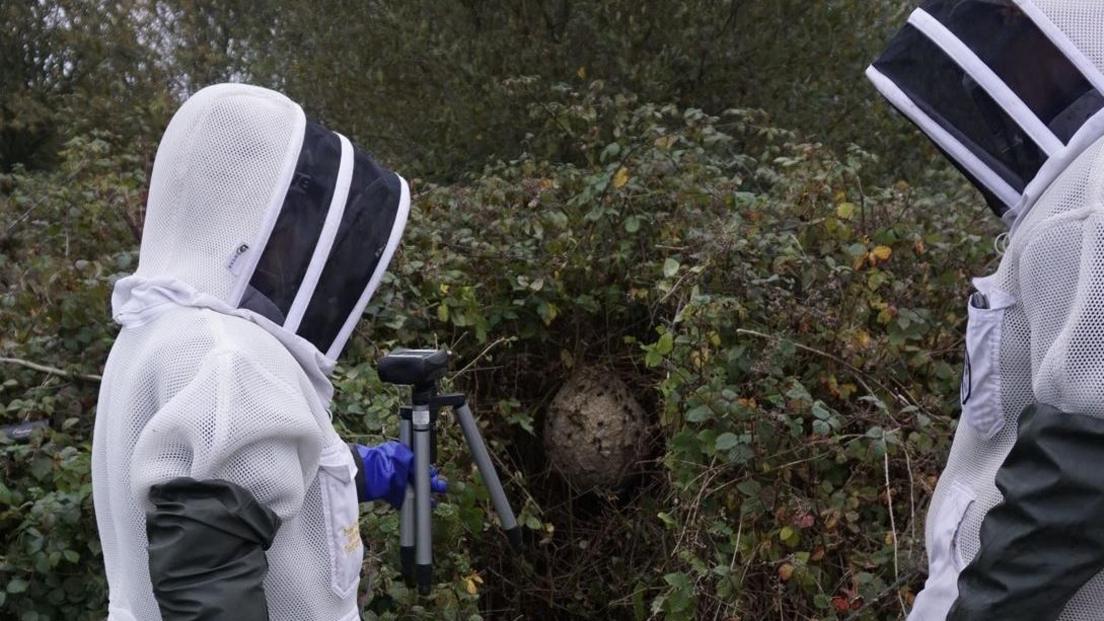
The fundamental frequency of the nests has been found to be 125 Hz and the loudness in the region - 51 decibels, which is comparable to a normal conversation
- Published
Researchers have identified the unique sound of Asian hornet nests and say it could be the key to finding and removing them.
A team at the University of Southampton said they had established the frequency of the invasive insect species for the first time.
They believe it paves the way to faster detection and removal of their nests, as a surge in numbers is experienced this year.
Researcher Sophie Gray said building a drone that could locate nests would be the next step.
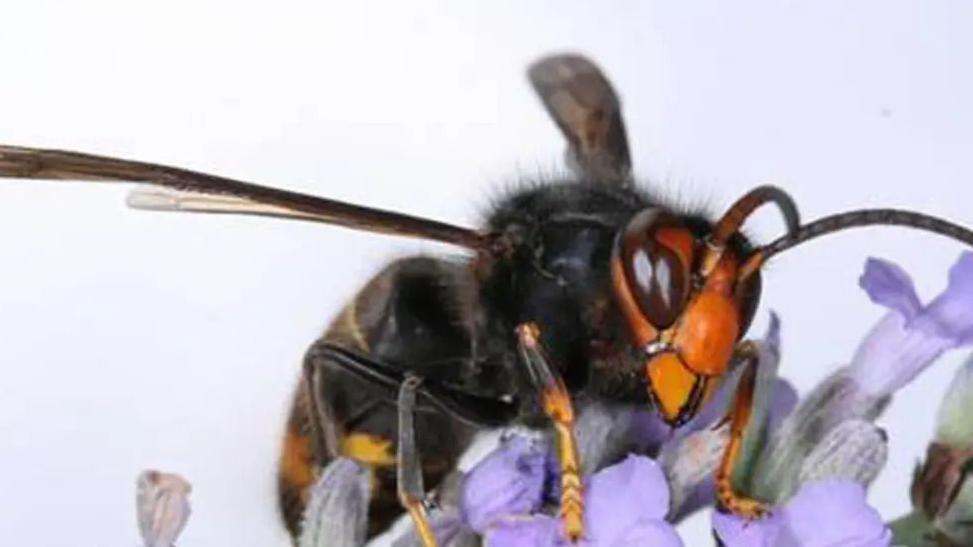
Asian hornets are black with an orange stripe on the abdomen and yellow legs
So far this year, there have been 37 confirmed sightings of Asian hornets, also called yellow-legged hornets, in the UK.
The National Bee Unit has also reported 73 sightings and 28 nests in 2025 to date – more than double the 28 recorded sightings in the same period last year.
The researchers said that meant nests, which peak in numbers during September and October, could be detected and their sound used to distinguish them from the nests and hives of other wasps and bees.
The project was led by Paul White, professor of statistical signal processing at the university, and project advisor Adrian Dwyer.
The fundamental frequency of the nests has been found to be 125 Hz, with a loudness in the region of 51 decibels, which is comparable to a normal conversation.
"The nest can be detected from about 20m away with a directional microphone," Ms Gray said.
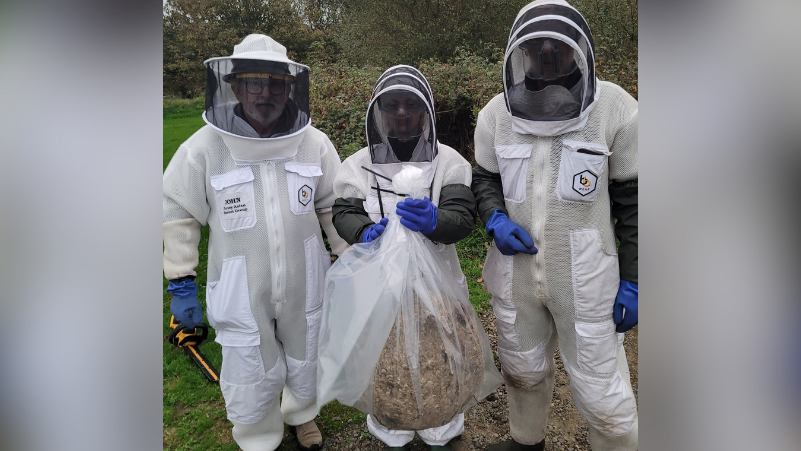
Researcher Sophie Gray (centre) said building a drone that could locate nests would be the next step
Asian hornets are not yet established in the UK and all discovered nests are destroyed.
"They first came to England through Kent in 2016 and in the last two to three years have begun to establish themselves here," Ms Gray said.
"They can be underground, or 50 feet up a tree, or in a bird box, or a bush – they can be anywhere."
She added that by the time a sighting was reported "the hornets can have completely killed a beehive of upwards of 20,000 bees".
Sightings of an Asian hornet should be reported to the UK Centre for Ecology and Hydrology.
Get in touch
Do you have a story BBC Hampshire & Isle of Wight should cover?
You can follow BBC Hampshire & Isle of Wight on Facebook, external, X (Twitter), external, or Instagram, external.
- Published9 August
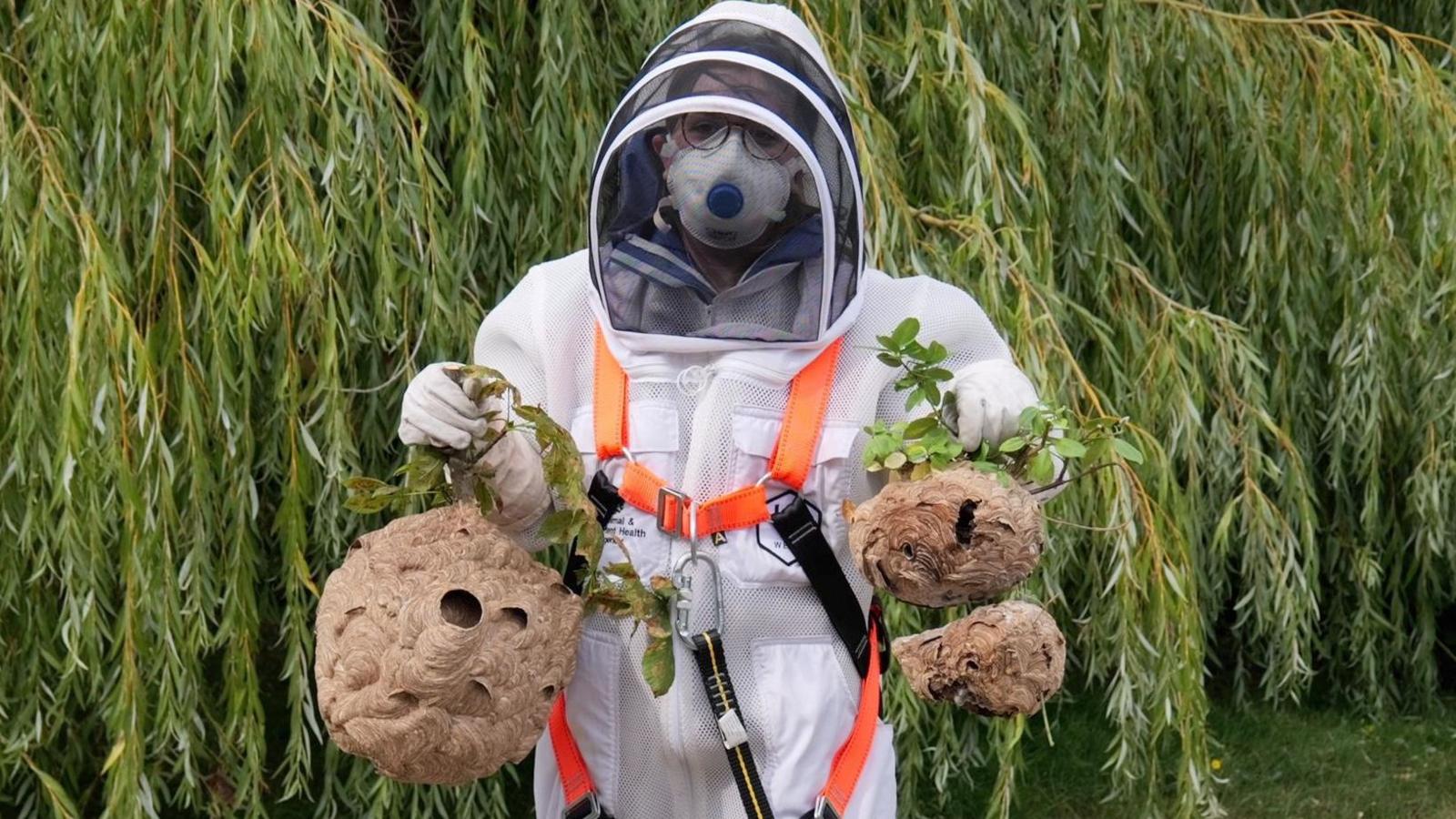
- Published29 July
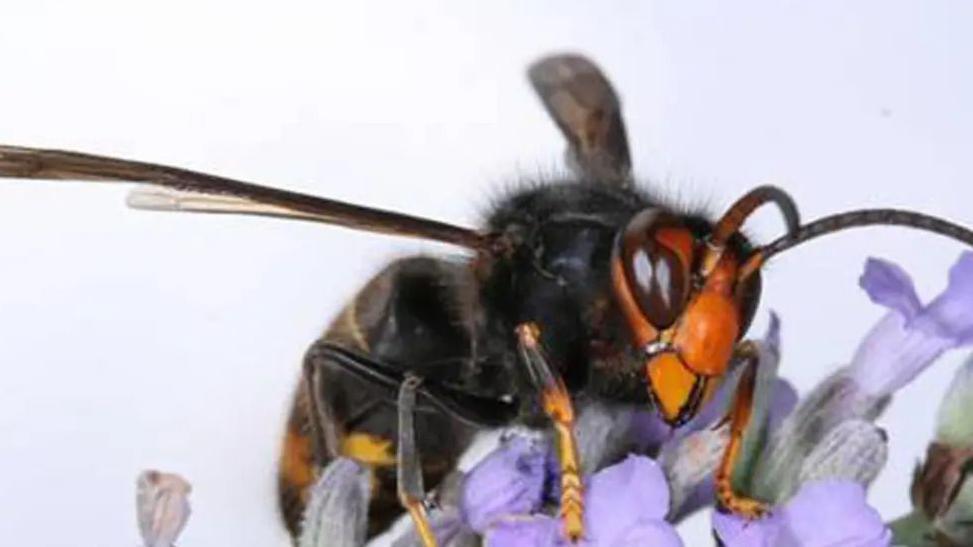
- Published11 May
